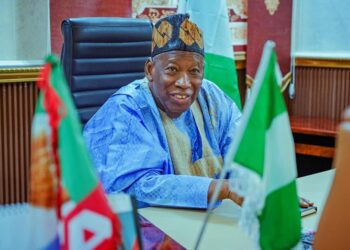Yesterday, Wednesday, July14,Theresa May took over the job of British prime minister from David Cameron and formed a government with the monumental tasks of extricating Britain from the European Union and uniting a fractured nation.
May, who has been interior minister for six years and is seen by her supporters as a safe pair of hands to steer the country through the disruptive Brexit process, will become Britain’s second woman prime minister, after Margaret Thatcher.
“I think around the cabinet table yesterday the feeling was that we have our Angela Merkel,” said Jeremy Hunt, health secretary in Cameron’s team which met for the last time on Tuesday.
“We have an incredibly tough, shrewd, determined and principled person to lead those (Brexit) negotiations for Britain,” Hunt told Sky News television.
German Chancellor Merkel will be May’s most important counterpart on the continent as the Brexit process unfolds. Both women are renowned for their firmness, pragmatism and discipline.
Britain’s decision to leave has rocked the bloc it joined 43 years ago, and thrown decades of European integration into reverse.
Cameron, who led the “Remain” campaign, announced the morning after the June 23 referendum that he would stand down, triggering a leadership contest in the ruling Conservative Party. The contest had been due to last until September but ended unexpectedly on Monday when May’s last rival pulled out.
After taking part in his last weekly session of Prime Minister’s Questions (PMQs) in parliament’s House of Commons at midday (1100 GMT), Cameron will make his way to Buckingham Palace to tender his resignation to Queen Elizabeth.
Ministry for brexit
After her own visit to the palace to be formally entrusted with the job by the monarch, May will then enter Number 10 Downing Street as prime minister in the afternoon
The shocks of the referendum result, Cameron’s resignation, and disarray in the main opposition Labour Party have plunged Britain into its deepest political crisis in modern times.
Apart from the task of executing Brexit, May must try to unite a divided party and a nation in which many, on the evidence of the referendum, feel angry with the political elite and left behind by the forces of globalization.
She is expected to immediately start putting together a new cabinet, a complex political balancing act in which she will try to satisfy opposing camps in her party.
Before the referendum, May had campaigned for Britain to remain in the EU, albeit in a low-key fashion. Since the vote, she has repeatedly said that “Brexit means Brexit” and her backers say she is determined to make the exit a success.
“Of course Theresa is going to want to make sure she’s got a balanced ticket that represents the views of different parts of the party,” cabinet minister Chris Grayling, who campaigned for Brexit and managed May’s leadership campaign, told BBC radio.
May has said she plans to set up a new government department to lead the process of quitting the EU which would be headed by someone who had campaigned for Brexit.
“That’s very sensible. It will ensure confidence among those in the party who did campaign to leave that they have a champion who believes in what they campaigned for,” Grayling said.
Financial markets, which had been extremely volatile since the referendum, reacted positively to news on Monday that May would become prime minister earlier than expected, with sterling making strong gains against the dollar and the euro.
Stock markets traded within sight of their highest levels this year on Wednesday as the prospect of stimulative economic policy across the developed world eased immediate concerns over the impact of the Brexit vote.
The United Kingdom is about to usher in a leader who is every bit as formidable and steady as the last woman who ran the country: Margaret Thatcher.
Like the “Iron Lady,” who served as prime minister from 1979 to 1990, Home Secretary Theresa May has a reputation for steely determination and a willingness to stand up to the men who traditionally dominate British politics.
May joins German Chancellor Angela Merkel as the leader of one of Europe’s biggest nations. If Hillary Clinton wins the U.S. presidential race in November, women would be in charge of the Western world’s most powerful countries.
May, 59, emerged as the leader of the U.K. Monday when her only rival for Conservative Party leader, Energy Minister Andrea Leadsom, 53, dropped out of the race. Prime Minister David Cameron, who announced he would resign after coming up on the losing side in the June 23 Brexit referendum, stepped down Wednesday.
Britain’s Conservative Party confirmed May has been elected party leader “with immediate effect” and will become the country’s next prime minister.
May is known to have a rigorous grasp of policy detail and a restrained political style that has allowed her to emerge relatively unscathed from the country’s controversial vote to leave the European Union. She sided with the “remain” camp as a loyal supporter of Cameron.
During the four-month, acrimonious referendum campaign, May kept a low profile and avoided the heated rhetoric leaders of both campaigns unleashed against one another. She has said she would honor the referendum but hasn’t spelled out details of how quickly she would move to separate Britain from the EU.
“I know I’m not a showy politician,” May said last month. “I don’t tour the television studios. I don’t gossip about people over lunch. I don’t go drinking in Parliament’s bars.”
Who is may?
Like Thatcher, who died in 2013, May is a Conservative Party veteran with a strong, pro-market stance. Both have expressed skepticism about growing integration of the EU at the expense of national sovereignty.
Thatcher favored power suits and puffy blouses, often accompanied by a pearl necklace. May is also known for her style, especially her leopard-print shoes.
May is an Oxford graduate with a degree in geography who once worked for the Bank of England and is regarded as the the most experienced and qualified candidate to take over from Cameron. She was first elected to Parliament in 1997.
After graduating with a degree in Geography, May went to work in the City, initially starting work at the Bank of England and later rising to become head of the European Affairs Unit of the Association for Payment Clearing Services.
But it was already clear that she saw her future in politics. She was elected as a local councillor in Merton, south London, and served her ward for a decade, rising to become deputy leader. However, she was soon setting her sights even higher.
Mrs May, who has become a confidante as well as role model for aspiring female MPs – told prospective candidates before the 2015 election that “there is always a seat out there with your name on it”.
The daughter of a vicar, May grew up in Eastbourne, on Britain’s southern coast.
On defense, foreign policy and the economy, her record suggests that like Cameron she would be pragmatic, although she has gone further right than Cameron in calling for the abolition of Britain’s membership of the European Court of Human Rights. May has argued that the court hinders policing and security efforts and does little to advance protections against discrimination that are guaranteed under British law. Since becoming a candidate for prime minister she has dropped the proposal.
May served as Cameron’s home secretary, a cabinet-level position widely acknowledged to be one of the most challenging jobs in government, involving immigration, national security and crime. She has held the position since 2010 — longer than any other politician in more than 50 years.
May has Type 1 diabetes, a condition that requires four insulin injections per day, but she said she has not let it hold her back.
“I just get on and deal with it,” she said. “I go to a lot of functions where I am eating and I speak at dinners, so that brings an added complication. When I’m going to do a debate or speaking at a conference, I have to make sure that I’ve tested and know where I am, so I can adjust as necessary.”
The former home secretary’s carefully cultivated image of political dependability and unflappability appears to have made her the right person at the right time as the fallout from the UK’s vote to leave the EU smashed possible rivals out of contention.
Long known to have nurtured leadership hopes, Mrs May – whose friends recall her early ambition to be the UK’s first female PM – could have reasonably expected to have had to wait until at least 2018 to have a shot at Downing Street.
That her party should rally round her at such a time of national uncertainty is testament not only to the respect in which she is held across the party but to the fact that, in a world where political reputations can be shredded in an instant, Mrs May is the ultimate political survivor.
She also expressed a personal desire to withdraw from the European Convention on Human Rights but later said she would not pursue this as PM due to a lack of parliamentary support – an example of what many believe will be pragmatism in office.
Her social attitudes are slightly harder to pin down. She backed same sex marriage. She expressed a personal view in 2012 that the legal limit on abortion should be lowered from 24 to 20 weeks. Along with most Conservative MPs she voted against an outright ban on foxhunting.
What is undisputable is that at 59, Mrs May will be oldest leader to enter Downing Street since James Callaghan in 1976 and will be the first prime minister since Ted Heath who does not have children.
While her wider political appeal is, as yet, untested, Mrs May will not have to face a general election until May 2020 unless she decides to seek a fresh mandate – something she has seemingly ruled out.
While the early years of Mrs May’s time in Downing Street may be dominated by the process of divorcing the UK from the EU and the deal she will be able to strike, she has also insisted she won’t be content with the “safe pair of hands” tag that is often attached to her.
Brexit, she has said, won’t be allowed purely to define her time in office and she has promised a radical programme of social reform, underpinned by values of One Nation Toryism, to promote social mobility and opportunity for the more disadvantaged in society.
Sources: BBC news and Reuters



